Kamal Sarabandi’s leap of faith in Michigan
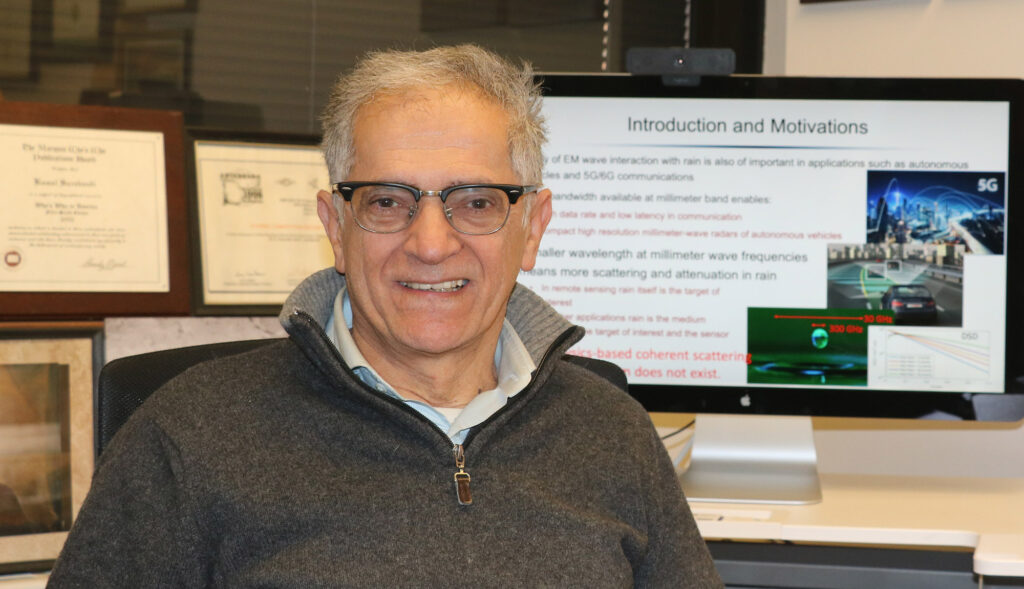
We tell students today not to expect to stay in the same job their entire lives. Kamal Sarabandi has managed to switch gears throughout his career, while staying put in the same department. His curiosity has led him to make impactful contributions in a variety of areas, including autonomous vehicles, wireless technology, antenna miniaturization, and concealed weapons detection – all while maintaining his roots in radar remote sensing. He was named a member of the National Academy of Engineering in 2021, one of the highest honors earned by an engineer.
It’s not every day I get to sit down and chat with a faculty member about their career before they’ve retired. But this is a Leap Year, and as February 29 was approaching, Kamal recalled it was 40 years ago to the day that he landed at JFK airport in NYC after leaving his home in Iran, on his way to Detroit, Mi and his future home in Ann Arbor.
So I sat down to hear how those last 40 years have gone for Kamal. It sounds like a long time – but his enthusiasm for the next chapter in his career is palpable, and his goals inspiring. Keep reading to learn more, including his desire to raise $20M to support students through a new Foundation – and his work to instill in his students the importance of their work as engineers to improve society.
What was it like on that day 40 years ago, February 29, 1984?
The weather was so bad, I’m surprised they flew the airplane. Everything was so white with the snow. We don’t get that kind of snow in Tehran. After arriving in Ann Arbor, the first grocery store I found was Village Corner [originally located on South University]. I remember the store very clearly.
You came as a first year graduate student. What stands out from that time?
I came the same year as Fawwaz Ulaby, Linda Katehi and John Volakis. Prof. Chen-to Tai was here. I attended some of his Radlab seminars before he retired.
I was interested in doing microwave research, so I went to George’s office [George Haddad was Chair of the Department at the time], and he wrote a note and told me to give it to Tom Senior. We were in East Engineering back then. Tom wasn’t in his office, but Fawwaz was, and he invited me to do some work with him. By the next semester, he hired me.
I took a course with Linda her first semester. I talked to her recently and we talked about the class. It was a tough class – and when the first exam came back, I was the only person above the mean. She recalibrated her grading after that.
Back then the department was less cohesive. There were CICE [Computer Information and Control Engineering] classes, CS [Computer Science] classes, and the Systems group was a separate division.
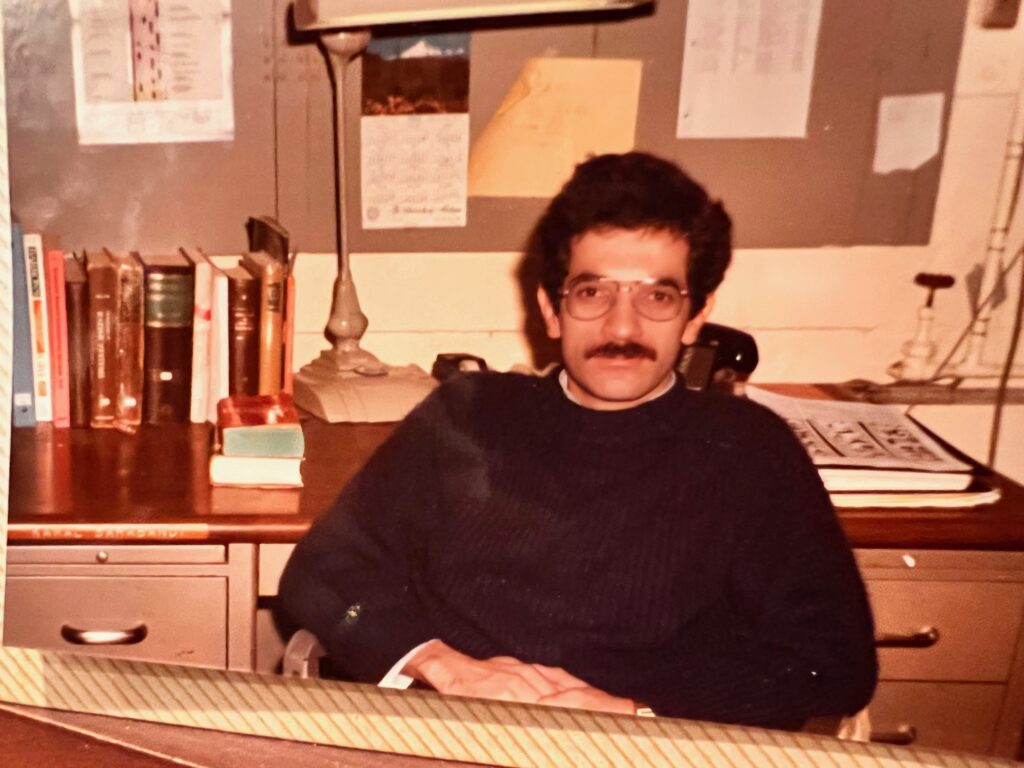
In those days, we chose a major and a minor – my minor was Communications. Prof. Root was my professor in stochastic processing. Arch Naylor was there and I took his course. Demos Teneketzis joined that year – and I took one of his first courses in Information Theory. That was all my first semester, and I took all these difficult courses [he said laughing]. I have fond memories of those years.
In 1986, we moved to this building. We got a new anechoic chamber and much better lab facilities. Back then the lab was in the basement, with a parking lot on top of it. It was leaking all the time. But here, we had an atrium and trees inside the building! That was unique.
We came to this building with a lot of enthusiasm. It was an exciting time from 1986-1992; the energy level was really high. There was a lot of faculty hiring.
Who were important people in your doctoral work?
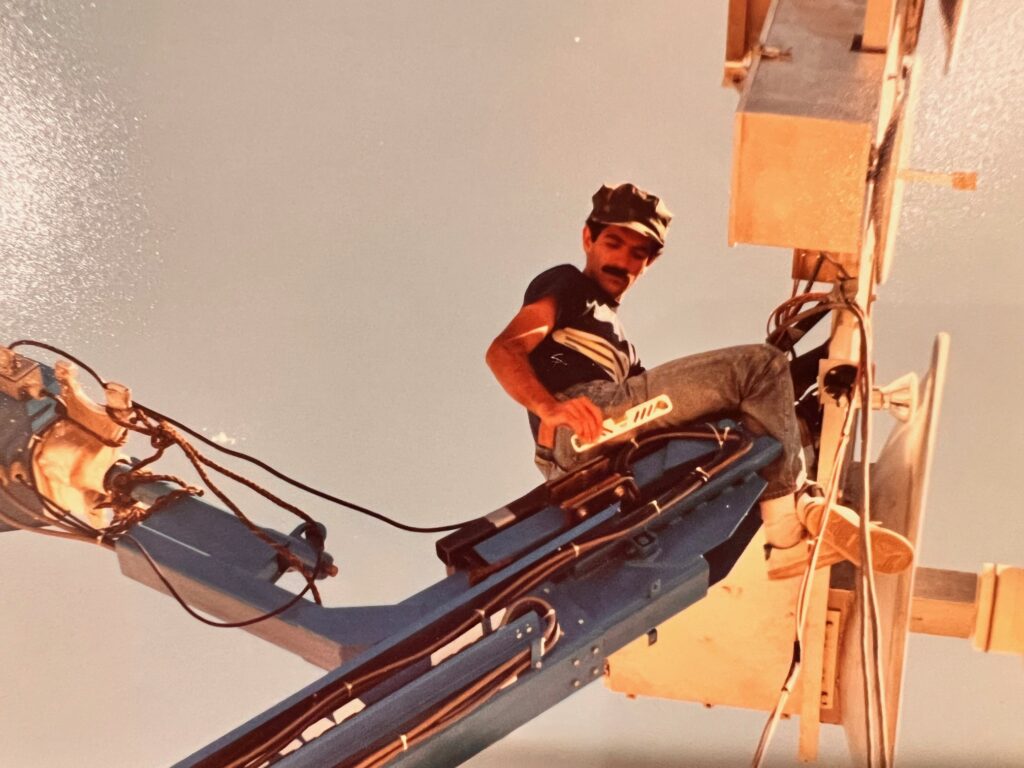
I worked on more of the applications side of electromagnetics with Fawwaz. I also had a keen interest in theoretical work, and Tom had the mathematical and theoretical side of what I wanted to do. So Fawwaz and Tom were co-advisors on my dissertation.
Tom Senior, Linda Katehi and David Neuhoff were in my qualifying exam back in 1986. It was fun. Back then more than 30-40% of the students would flunk the qualifying exam. Students were really afraid of the exams. That doesn’t happen any more.
How were you able to stay on and get hired as a faculty member?
I graduated in 1989 with my PhD. My wife was still in dental school. Fawwaz suggested that I stay here as a research scientist until she finished. That sounded good to me. During this time the Radlab [Radiation Laboratory] hired one faculty member in 1990, but he left and the position opened at the same time my wife graduated from Dental School.
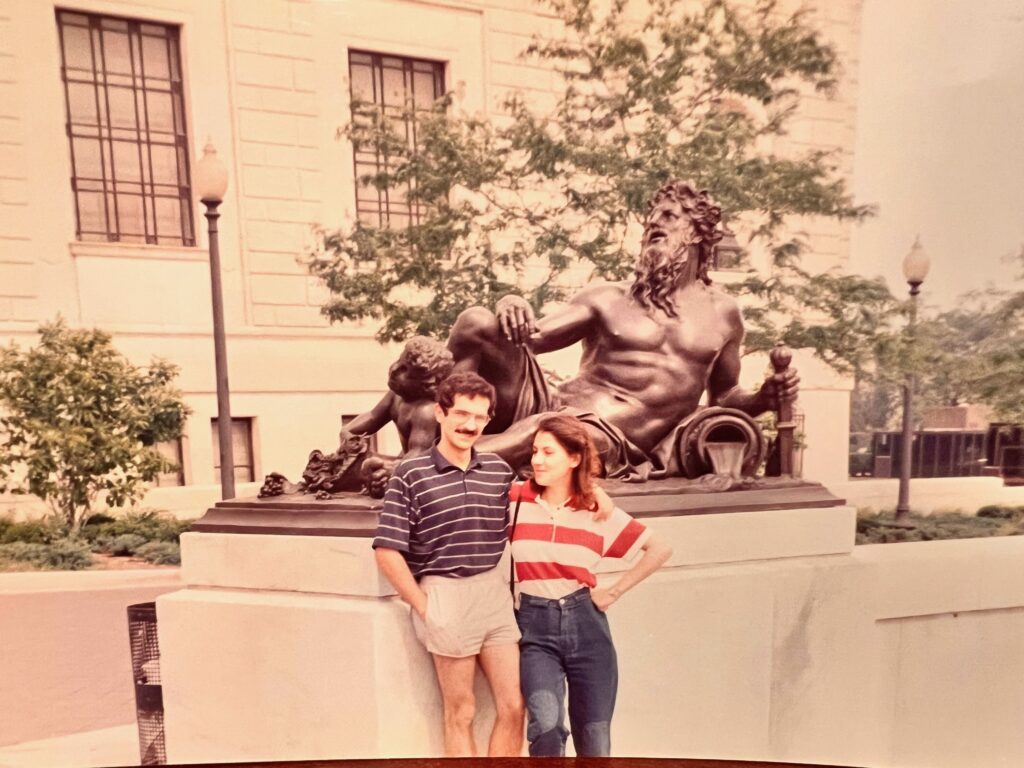
Fawwaz asked if I wanted to stay here, and he talked to George. I applied for that open position and got it. I was very happy, and the rest is history. My wife’s office is close to here on Plymouth Road. My son graduated from Michigan in 2021 in neuroscience, during COVID. My younger son is at Skyline High School.
Since I’ve been here I’ve seen a lot of new buildings, including the Dean’s office. The Dean’s suite used to be on the 2nd floor of the EECS Building. It housed their entire staff. Now they have more like 260 staff.
I became Director of the Radlab and moved into this office in 2000. So I’ve been here for 24 years. I think I’ve spent most of my waking life in this office.
What are some of your most memorable research accomplishments?
Well, there have been quite a different number of things. I really wanted to be part of NASA’s shuttle radar topography mission. And I was part of that team. I worked a lot with NASA and JPL over the years, and all that was fun.

I’ve worked with different companies, government labs and agencies. I had several DARPA projects; the one with BioRadio was extremely exciting. We proved experimentally that cells do communicate electromagnetically, and wrote several papers on that. Most of that research was outside my realm of expertise, and we had a good team with several departments. The discovery of the actual signals was done by my students.
Every 5 years or so I purposefully try to pursue a new field of research. I always want to learn more. I still do a lot of work with NASA and radar remote sensing. But I kept adding to that.
In the 1990’s, I added autonomous vehicles. President Clinton had a vision of an automated highway system in California, and we were in a consortium with General Motors to make that a reality. We built a foundation for the application of millimeter wave radar for autonomous vehicles. This was from about 1992-97.
Then I ventured into wave propagation because wireless was coming along. So in the early 2000’s I did a lot of work in antennas for cell phones, for cell phone towers, and miniaturization of antennas. I worked with Ken Wise on his WIMS [now WIMS2, Wireless Integrated MicroSensing & Systems] team investigating low power communications, integrating filters with our antennas.
I was also doing a lot of work on communication channeling modeling to figure out how waves interact with the environment; how cell phone signals get inside buildings; how much power you need to get coverage in the building, etc. I was doing this work for industry, but there are also a lot of military applications for this research. They were very interested in antenna miniaturization, and scaling for different applications.
Another project had to do with mapping the inside of a building from the outside. I used remote sensing techniques for that one, and developed new radar designs.

My biggest project was our 10-year MAST Center [Center for Microelectronics and Sensors funded by ARL under the Collaborative Technology Alliance program], which we called COMBAT, the Center for Objective Microelectronics and Biomimetic Advanced Technology. This program ran from 2008-2018; it supported 18 faculty and 45 PhD students. Everything we did in that project was for the first time.
My research is still evolving and I’m excited about things. I’m still working on millimeter wave technology for autonomous vehicles. We are trying to push to higher frequencies, which shrinks the size of the radars. We are looking into technologies to replace lidar with radar so its operation is not hampered by rain, fog, snow, or dust, while giving you similar resolution quality – but with far more sensitivity and range.
With one of my students, Aditya [Varma Muppala], I’m working on a super resolution imaging system for a variety of applications, including autonomous vehicles, robotics, weapons detection. This project started back in about 2006 with DARPA, but we have better technology today. For example, if you were to write something on a piece of paper and put it in an envelope, we are now able to read the text through the envelope, with very high resolution.
I had a project with Ford for about five years where we developed a real-time scene simulator for improved testing of automotive radar data. Ford is using this and has gotten many international patents.
I’ve learned quite a bit from all these things, and it allows me to move into different areas and make contributions. This flexibility is extremely important. It also makes students very happy about what they do, because they know what they’re doing is going to have an impact. So they’re very proud of what they are doing.
What’s next?
My vision for my next project is to figure out how to charge vehicles as they drive on roads and highways. I’m thinking about the cost of the infrastructure to support it, and human safety. I’m also looking into ways to be able to shrink the size of an automobile battery so it can charge more efficiently. I’m working on that this year while I’m on sabbatical.
This technology is new and disruptive, and would help people.
I’m actively recruiting new students. During the COVID years I was not recruiting. We pass along knowledge through our students. I typically have about 15 students in my group.
Tell us about your companies
EMAG Technologies is still active. It started as a software company to develop electromagnetic simulation tools. Several are now offered commercially and are being used by industry. We also worked on DoD projects with that company.
A spinoff of that company was Gradient, which supplied antennas for the auto industry. We had an instrumentation spinoff called Opteos. I started another company called Navisense that I may get back to, I’ll have to evaluate things. Everything has to line up perfectly for a new company to do well.
EMAG has been very successful. We’ve brought in about $150M to the local economy with that company through contracts and people I’ve supported.
Tell us about your professional service.
I think it’s extremely important as we do our work that we are also ensuring that the ecosystem is healthy. You need to have a group of scientists and engineers connected through an organization to promote each other’s work, and to influence decision makers in society both here in the U.S. and globally.
Since my student years, I’ve been part of 3 different IEEE societies: Microwave Theory & Technology [MTT-S], Antennas and Propagation [AP-S], and Geoscience and Remote Sensing [GRSS]. Because of my work in remote sensing, I focus most of my activities on GRSS. I served in that society for many years, including as President for two years.
During that time, I tried to create a competitive environment that is attractive to students and younger faculty so they are discussing and working on important problems. We also wanted to help developing countries by engaging their faculty. We initially focused on China, and now we have more members from China than anywhere else. We’re now trying to engage India and South America.
Our membership has grown from about 2,000 members when I started my term to more than 6,000 members today.
Now I’m working as a member of the Administrative Committee of the Antennas and Propagation Society to develop a Foundation in support of students. I want to raise $3-5M the first year, and grow the fund to $10-20M before I end my term. The money would help support undergraduate students interested in research in this area, as well as travel grants and graduate student fellowships. I’m also trying to institute best practices for this society based on what I learned in GRSS.
Recently I served as Chair of Commission F of URSI [United States National Committee for The International Union of Radio Science (USNC/URSI)]. Commission F focuses on wave propagation and remote sensing. I’m still involved in URSI; it’s a very nice and thriving group of people.
You served as Radlab director for 20 years. Tell us about that.
George Carignan [former Assoc. Dean for Research] once told me in a meeting that the Radlab was the crown jewel of the College of Engineering. That was a very nice thing for him to say. At the time we had more than 70 PhD students. We had members with international stature, and we still have the most NAE members of any group in the department.
When students join the Radlab, they believe they can really change things, and they end up solving important problems. That’s very empowering, and it’s a feeling that stays with them. You can’t replace that feeling with anything. It’s a moment of joy they feel again and again and again.
Our core mission here is to disseminate knowledge and generate new knowledge. Society is supporting us and entrusting us to do this. If we are successful, then the impact of our work is going to benefit society far more than any other thing we could do.
The Radlab operates like a family. We see our success in the success of our colleagues. And we all show up for Radlab events, even students after they’ve graduated. The ecosystem continues. We’re proud of all our students. Every one of them has a successful story.
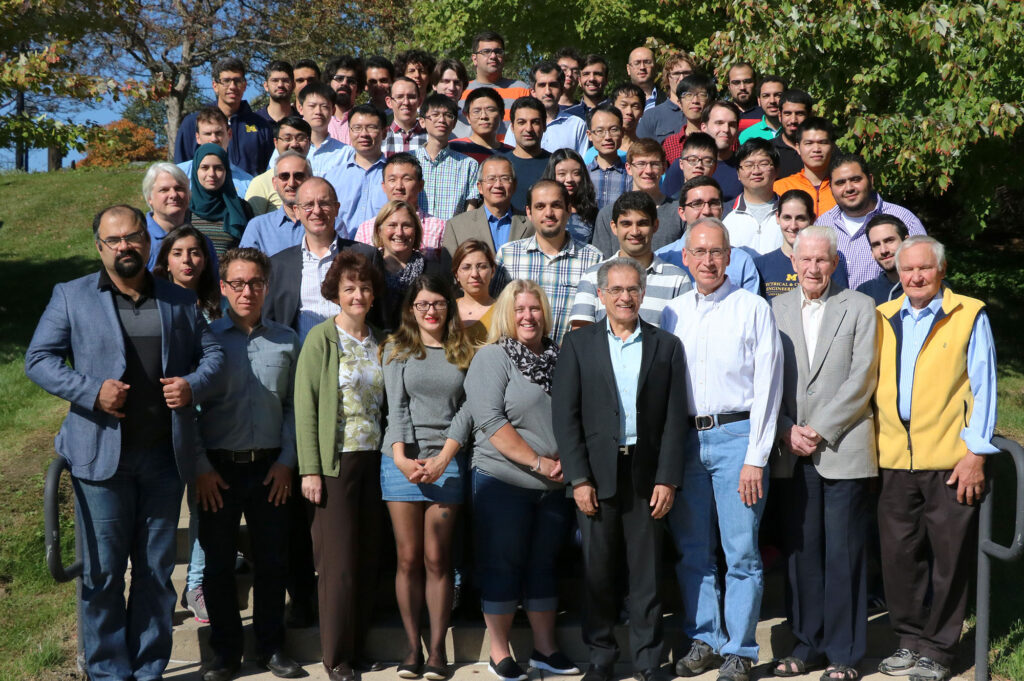
What final thoughts would you like to leave us with?
When I go to class, I think – maybe today I can change the path of someone’s life. If a student gets excited about this topic, they may decide to pursue something that otherwise they would not have, and that would change their life.
Our lectures are powerful. With every one of them – we might be able to impact someone’s life for the better. We do our best to present the facts and excite people about learning to help society as a whole.
The life we have today is so much better than it was 100 years ago, and it’s all because of the work of engineers. Whether it’s tools for medicine, or communication, or convenience, or even entertainment, it’s all enabled by the knowledge created by scientists, implemented by engineers, that affects everybody’s life.
It’s a very powerful career. There are many different ways of making money and sustaining your life, but once you get there, then the next important thing is: what does my life mean at the end? What did I do to help others? What did I do to make it easier for the next generation?
____________________
Read more about Kamal Sarabandi and his students
 MENU
MENU 
